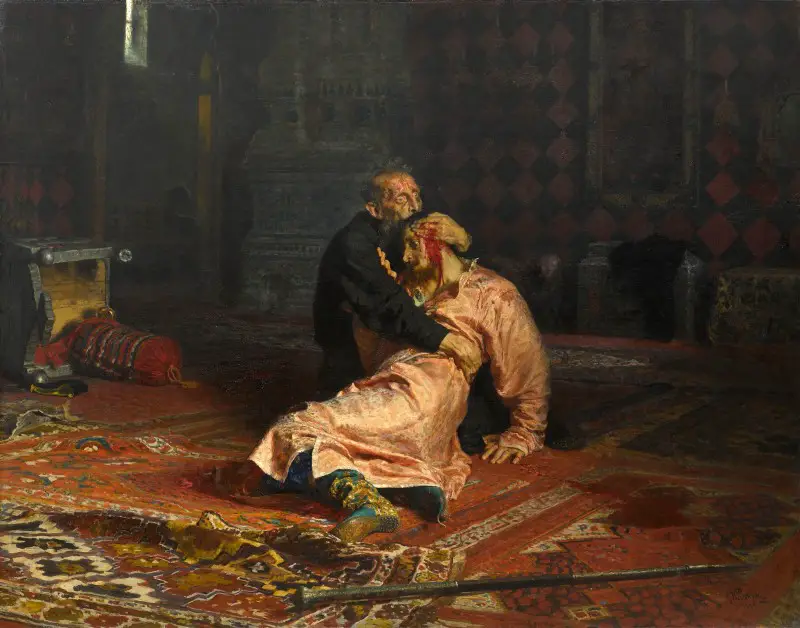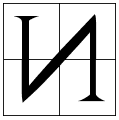 вaн IV Васuльевич (Anglicised: Ivan IV Vasilyevich), also known as Ivan the Terrible, was the first Tsar of Russia and a pivotal figure in Russian history. Previously the prince of the Grand Duchy of Moscow, he would go on to found the Tsardom of Russia. During his relatively long reign, he would expand his domain across much of Eastern Europe. This leads us to question, after doing so much for Russia, why was he called “the Terrible”?
вaн IV Васuльевич (Anglicised: Ivan IV Vasilyevich), also known as Ivan the Terrible, was the first Tsar of Russia and a pivotal figure in Russian history. Previously the prince of the Grand Duchy of Moscow, he would go on to found the Tsardom of Russia. During his relatively long reign, he would expand his domain across much of Eastern Europe. This leads us to question, after doing so much for Russia, why was he called “the Terrible”?
The last of the Rurikid dynasty
Ivan was born to the crown prince of Muscovy, Vasili III of the Rurikid dynasty. Only 3 years after his birth, his father would perish, leaving the kingdom to the young prince. Shortly after his father’s death, his mother would also perish in what many think was an assassination by the boyars who sought more power over the growing kingdom. Until his 16th birthday, the boyars acted as Ivan’s regents, ruling the country on his behalf.
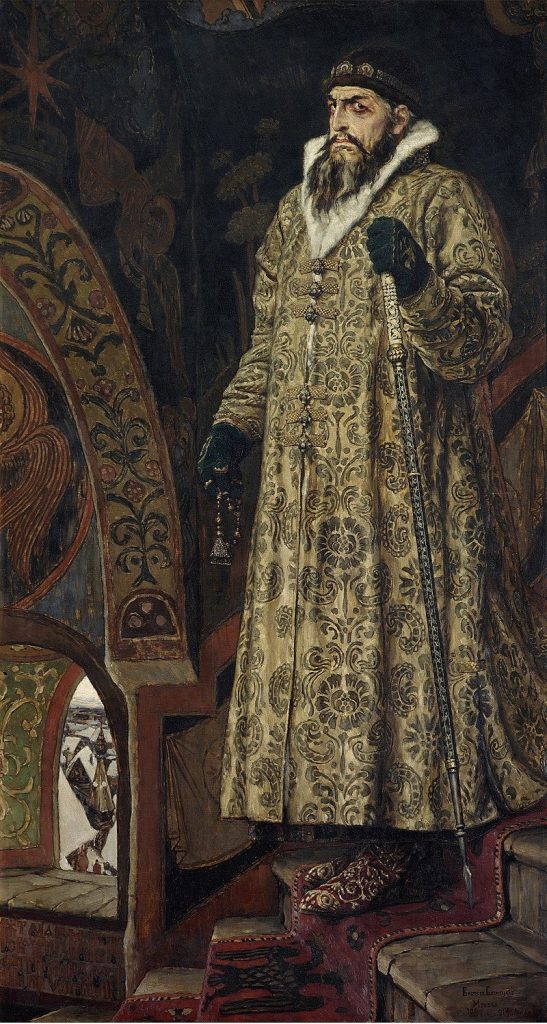
On 16 January 1547, at age sixteen, Ivan was crowned “Tsar of All the Russians”, the first to be given this title. This was the point where the Grand Duchy of Moscow turned into the Tsardom of Russia, marking the start of the formation of what we know as the modern Russian state.
The title bestowed onto him gave the young Ivan a lot of power throughout Eastern Europe which he would use to his advantage. During his reign, he would go on to incorporate many of the nearby tribes, most notably during his conquest of Novgorod and the Kazan Khanate.
Ivan would also start the Russian “Push East” which was a campaign to expand the territory of Russia eastwards through the Siberian tundra. This push would continue for decades, ending with the colonisation of Alaska, later sold to the Americans in the 1850s.
All of the actions seen above may lead us to think that Ivan wasn’t that “Terrible” after all but we are missing a piece of the puzzle. The way he conducted domestic policy and his treatment of his boyars.
Grozny
Before we look at Ivan’s actions, we should look at where exactly his title comes from. In Russian, the title that Ivan was given is written as Грозный (Anglicised: Grozny). This term was loosely translated by the west to mean “terrible” but it can be more accurately translated as “fearsome” leading to the misconception that Ivan was a bad leader.
Although partly true, the term “fearsome” or more specifically “should be feared” better described the Tsar’s reign, especially after his defeat in the Livonian wars, which subsequently made the Tsar grow more and more paranoid.
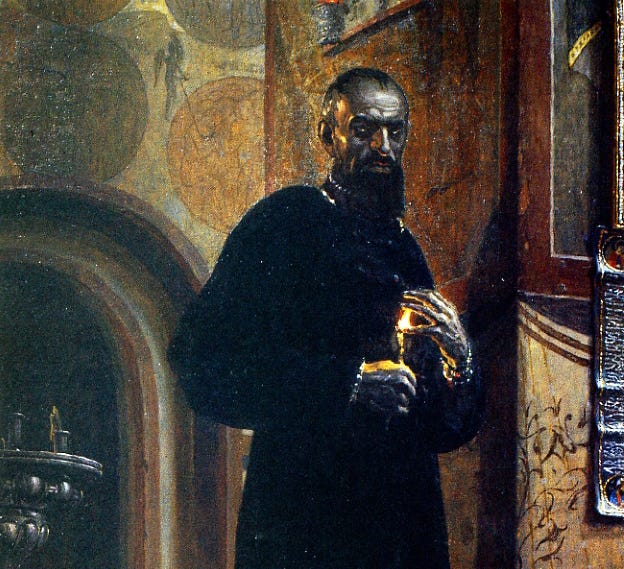
The group which feared Ivan the most was the boyars. Previously able to control the young Tsar, as Ivan got older, he grew to dislike the royalty of Russia. Many theorize that the boyars poisoned Ivan’s mother while she ruled as regent for the young prince; thus, we can assume that the Tsar not only didn’t trust the boyars but also held a great dislike for them. As he grew older, Ivan wanted to centralize his power more and more, which meant placating the powerful boyars. For this, he had a plan.
The old-style KGB
On 3 December 1564, Ivan left Moscow and sent a letter that stated his abdication, leaving the boyars in charge of the country. Due to Ivan’s popularity throughout Russia, especially in Moscow, the boyars feared that his abdication would split the country apart. They begged for his return, to which he responded with an ultimatum. He would return and rule the country only if he was given absolute power, to which the boyars reluctantly agreed.
He used his newfound power against the boyars through the creation of the Oпричник (Anglicised: Oprichnik), a mercenary force that swore allegiance to the Tsar rather than the state. In practice, the Oprichnik was used as Ivan’s personal secret police working quite similarly to the later instituted KGB of the Soviet Union.
The Oprichnik would hunt down the boyars who were suspected of scheming against the king and either kill or capture them. The autocratic state created by these actions was one main reason for Ivan receiving his title.
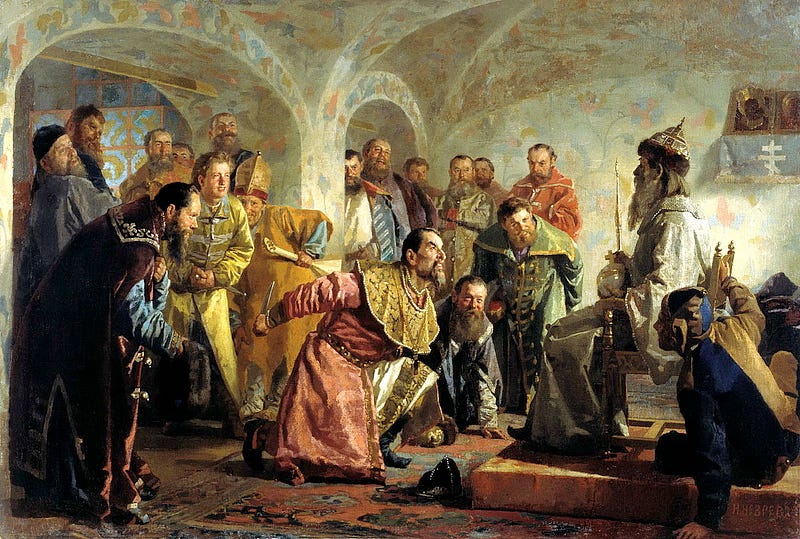
Ivan’s paranoia towards the boyars would reach a boiling point in 1570 when he ordered the Oprichnik to attack the city of Novgorod, citing betrayal as his reason for the attack. The ensuing Massacre of Novgorod was brutal.
The estimated 3,000 casualties, as well as the extreme level of violence displayed by the private army, made this campaign possibly the most vicious and brutal in the legacy of the Oprichnik.
The death of the Tsarevich
Finally, perhaps one of Ivan’s worst actions as head of state was the killing of his son and only heir to the throne, Tsarevich (heir to be) Ivan Ivanovich. The relationship between the two was already strained due to the young Tsarevich’s military ambitions, especially evident during the Livonian war, where he begged his father for a military contingent to use to relieve the Siege of Pskov, a request denied by the headstrong Tsar.
Ivan’s paranoia would overcome him on 5 November 1581, when during an argument with the Tsarevich about his military ambitions and the Tsar’s apparent assault of the Tsarevich’s wife, he would get violent. In anger, the Tsar struck his son in the temple with his scepter leaving his only heir to the throne on the floor with blood flowing out of his temple.
The Tsar immediately realized what he had done and collapsed on the floor, saying “May I be damned! I’ve killed my son! I’ve killed my son!”. This iconic moment is captured in one of my favorite paintings by Ilya Repin, used in this article’s thumbnail. With his last breath, the young Tsarevich whispered to his father:
“I die as a devoted son and most humble servant”
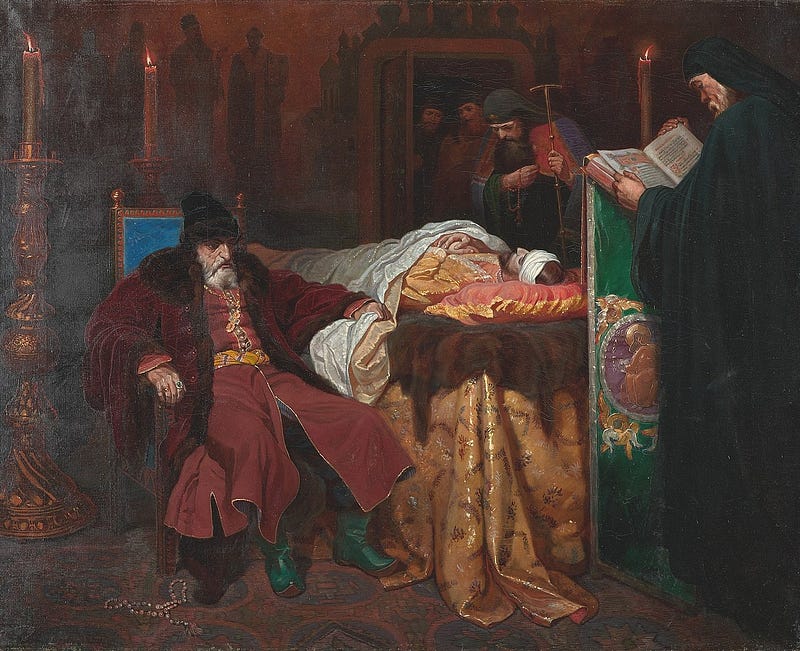
With that statement, the Tsarevich fell into a coma from which he would not wake up from. His death was pronounced on 19 November 1581. The Tsarevich’s death also meant the death of the Rurikid dynasty as he was Ivan’s only son. With the Tsarevich’s wife also experiencing a miscarriage due to the Tsar previously assaulting her, it meant that the newly formed Tsardom of Russia was left without a concrete heir, paving the way to the Time of Troubles.
The Time of Troubles was the period of interregnum between the death of the last of the Rurikid dynasty, namely Ivan’s successor Feodor I, and the takeover of the throne by the Romanov dynasty by Michael I in 1613. This was a time where the country was ripped apart by internal conflict due to the confusion around who should lead the country after Fedor’s death. A conflict purely caused by Ivan’s killing of his son as a result of his rampant paranoia.
Ivan’s title as “the Terrible” has always been contested by historians. With both good and bad coming out of his reign of Russia, it is hard to draw a clear conclusion on the legitimacy of this title. Regardless of the conclusion drawn, it is evident that Ivan the Terrible played a large role in Russian history and, as an extension, in the history of Europe in general, leaving behind a legacy similar to the one of Stalin. A legacy of brutal autocratic rule.

Student of Philosophy, Politics and Economics. History fanatic. Contact: aneculaeseicg@gmail.com

